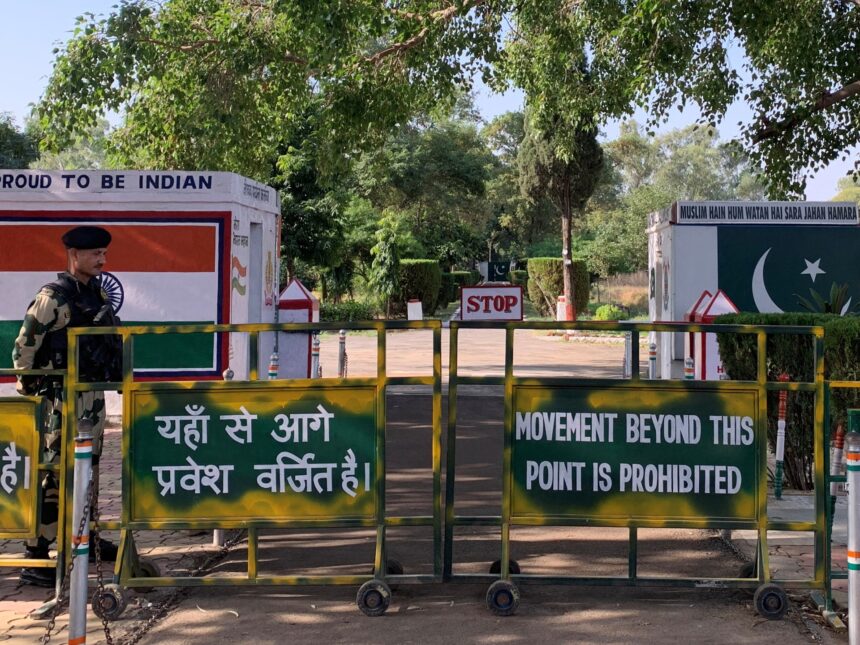Islamabad, Pakistan – The tensions between India and Pakistan have shot themselves since the April 22 attack against tourists in the picturesque tourist city of Pahalgam in Cashmira administered by India, in which at least 26 people were killed.
Both countries have announced a series of TIT measures per eye, which increases the fears of a broader confrontation.
After a cabinet meeting led by Prime Minister Narendra Modi, India announced on Wednesday the suspension of the Six Decadas Water Treaty (IWT), a critical agreement that governs the use of the Indo River system, vital for both nations. He also announced the closure of his border with Pakistan, commercial suspension, revocation of visas and a reduction of Pakistani diplomats in India.
In response, the National Security Committee (NSC) of Pakistan, its main civil-military decision-making body, announced similar measures, including border and airspace closures, the suspension of trade and, significantly, a threat to suspend its participation in all bilateral agreements with India, including the Simla agreement.
Signed in 1972, the Simla Agreement forms the basis of the relations between India-Pakistan, which governs the control line (LOC) and describes commitments to solve disputes peacefully.
Pakistan’s threat to suspend the agreement marks a potentially serious escalation. But what exactly is Simla’s agreement, and what are the implications if Pakistan retires?
What is the Simla agreement?
Seven months after the 1971 war, which India won and that led to the creation of Bangladesh, the Pakistani President Zulfikar Ali Bhutto and the Indian Prime Minister Indira Gandhi with Shimla (sometimes also spelling as Simlaal), the mountain state or the Indian state.
Key Points of the Agreement [PDF]Signed on July 2, 1972, it included the Pacific Agreement for Disputes and Resolution Problems, including Kashmir, bilaterally.
He also urged respect for territorial sovereignty, integrity, political independence and non -interference in internal affairs.
One of the most important results was the randamaming of the high fire line, the edge of work between the two countries, to the control line (LOC), with both parties agreeing not to change it unilaterally.
After the 1971 war, the agreement also led to the release of more than 90,000 Pakistani war prisoners that India was celebrating.
“Waiting for the final solution of any of the problems between the two countries, none of the parties will unilaterally alter the situation, and both will prevent the organization, assistance or encourage the management of any detrimental act for the maintenance of peaceful and harmonious relations.

Why is Pakistan’s threat significant?
Ahmer Bilal Soofi, an outstanding expert in international law and former legal advisor of the Government of Pakistan, described the Simla agreement as an interim but crucial framework between the two countries.
“Suspending the agreement would require a meticulous internal evaluation” by Pakistan to ensure that it serves the country’s interests to retaliate against India, Soofi told Al Jazeera. “Any decision must involve due extreme diligence.”
Another expert in International Law, Muhammad Mushtaq Ahmad, of the Shifa Tame-E-Millat University, explained that India has long interpreted the SIMLA agreement as replacement resolutions of the United Nations Security Council (CSNU).
“The position of India is that the agreement caused Kashmir to be a purely bilateral matter, eliminating any need for international mediation,” said Ahmad.
The Himalayan territory has been a point of inflammation between the two countries since it won the independence of the British dominance in 1947, and each controlled parts of Kashmiro but claimed it in its entirety. Since independence, neighbors with nuclear weapons have fought four wars, three of them on Kashmir.
Pakistan, on the other hand, argues that Simla’s agreement reaffirmed the UNSC resolution that advocated a diplomatic and political solution.
After the Modi government revoked the semi -autonomous status of Kashmir administered by India in 2019, Pakistan accused New Delhi or violated the Simla agreement.
Islamabad could quote that to justify the suspension of his participation in the agreement, said Ahmad. According to the Vienna Convention on the Law of Treaties, a Pakistan Pact is significant, but India is not, a material violation allows a country to denounce a treaty, Hey, he added.
But Indian defense analyst Ajai Shukla says that if one or both countries leave the Simla agreement, it would effectively represent the “open season” in the loc.
“It could lead to both parties to change the land position of the LOC, and will be encouraged to use the arms, since there will be no treaty that imposes peace, which is currently in place,” said the New Delhi headquarters to Al Jazeera.
The suspension of the Simla Agreement means war?
Despite Simla’s agreement, India and Pakistan have been involved in conflicts, including their four decades for the control of the Siachen glacier, the highest battlefield in the world and the 1999 Kargil war.

Ahmad, the academic, said that LOC could never establish lasting peace.
The Pakistani constitutional expert, Rida Hosain, argued that India historically “misused” Simla’s agreement for her advantage.
“Simla’s heart [Agreement] It is the peaceful coexistence. But the recent rhetoric of the Indian War and the guilt of the evidence of the attacks suggest otherwise, “said Hosain, referring to the accusation of India that Pakistan was responsible for the attack of Pahalgam. Pakistan has reversed. Isaded Isabem requested a” neutral research “in Kashmir’s attack.
Shukla, a former Indian army officer, however, said that an expulsion from Pakistan of the Simla agreement would not be equivalent to a declaration of war. Even so, he would bring the neighbors closer to a possible military conflict.
“One does not automatically lead to another, but it does mean that both will no longer have guards from an international treaty that prevents them from participating in armed hostilities,” he said.
What is Pakistan’s justification?
Unlike its immediate implementation of other retaliation measures, Pakistan has only threatened to leave the Simla agreement.
According to Soofi, the justified voice of Pakistan of the desire to return to multilatery.
“India has used Simla to argue that Kashmiro is a purely bilateral issue. Suspending it allows Pakistan to reverse the UN mechanisms of the UN Security Council to the internationalism of the Kashmir’s dispute,” Soofi said.
Shukla said that suspending the agreement could provide international coverage for both parties to pursue their interests on the LOC in a way that is not possible while adheres to the pact.
“Pakistan is always a hero to the notion that the Treasury as the Simla agreement has tied his hands to pursue his interests in places as if they are, which according to Pakistan is an example of India that violates the agreement,” he said. India successful captured the Siachen glacier located strategically in 1984 in a military operation that Pakistan insists on violating the Simla agreement.
Meanwhile, India also feels limited by the agreement, Shukla said. Nueva Delhi has insisted for a long time that Kashmiro administered by Pakistan belongs to India, and under modi, domestic rhetoric to recover that territory has grown.
“In essence, both parties feel that the agreement is not safeguarding their interests,” Shukla said.
Ahmad suggests that the suspension of IWT India could already constitute an act of aggression under international law, justifying self -defense measures by Pakistan. Under the IWT, India gets the waters of the Ravi, Beas and Sutlej rivers, all part of the Indo basin. On the other hand, Pakistan has the right to most of the water of the Indo, Jhelum and Chenab rivers.
“The Water Treaty supports the life of almost 250 million Pakistani. Its suspension can be seen as a hostile act,” said Ahmad.
The threat of withdrawing from the Simla agreement, said Ahmad, was a “intelligent decision of the government to remember India, to issue a kind of warning.”




